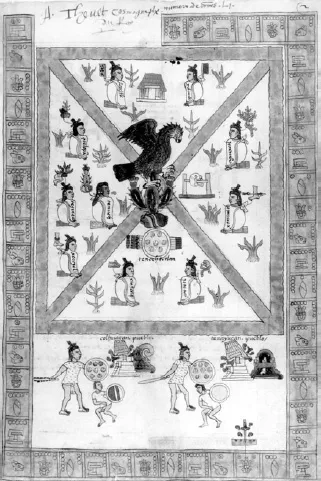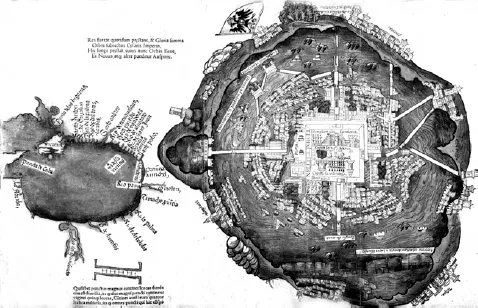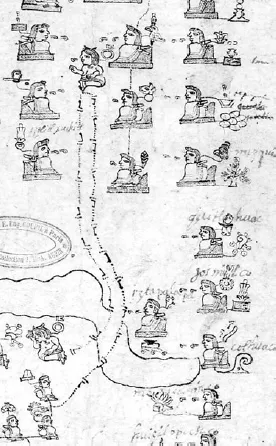![]()
Part One
Setting the scene
I’ve been thinking about ‘space’ for a long time. But usually I’ve come at it indirectly, through some other kind of engagement. The battles over globalisation, the politics of place, the question of regional inequality, the engagements with ‘nature’ as I walk the hills, the complexities of cities. Picking away at things that don’t seem quite right. Losing political arguments because the terms don’t fit what it is you’re struggling to say. Finding myself in quandaries of apparently contradictory feelings. It is through these persistent ruminations – that sometimes don’t seem to go anywhere and then sometimes do – that I have become convinced both that the implicit assumptions we make about space are important and that, maybe, it could be productive to think about space differenly.
Three ruminations
1 The armies were approaching the city from the quarter named the reed or crocodile – the direction in which the sun rises. Much was known about them already. Tales had come back from outlying provinces. Tax gatherers from the city, collecting tribute from conquered territories, had met up with them. Envoys had been despatched, to engage in talks, to find out more. And now neighbouring groups, chafing against their long subordination to the Aztec city, had thrown in their lot with the strange invaders. Yet in spite of all these prior contacts, the constant flow of messages, rumours, interpretations reaching the city, the approaching army was still a mystery. (‘The strangers sat on “deer as high as the rooftops”. Their bodies were completely covered, “only their faces can be seen. They are white, as if made of lime. They have yellow hair, although some have black. Long are their beards.”’1) And they were arriving from the geographical direction which, in these time-spaces, was held to be that of authority.
figure 1.1a Tenochtitlán – Aztec depiction
Source: The Bodleian Library
It was also the Year One Reed, a year of both historical and cosmological significance: a particular point in the cycle of years. Over past cycles the city had become mightily successful. It was only a few cycles ago that the Mexica/Aztecs had first set up in this huge high valley. They had arrived from the direction of the flint and after long wanderings; an uncultivated people in the eyes of the cities already established around the lake. But since their arrival, and the founding of this city Tenochtitlán, the Aztecs had piled success upon success. The city was now the biggest in the world. Its empire now stretched, through conquest and continual violent subordination, to the ocean in two directions.
Thus far the Aztecs had conquered all before them. But these armies approaching now are ominous. Empires do not last for ever. Only recently Azcapotzalco, on the edge of the lake, had been brought down after a brief blaze of glory. And Tula, seat of the revered Toltecs, now lies deserted, as do the ruins of Teotihuacan. All these are reminders of previous splendours, and of their fragility. And now these strange invaders are coming from the direction of acatl; and it is the Year One Reed.
Such things are important. Coincidences of events form the structures of time-space. For Moctezuma they add to the whole wretched conundrum of how to respond. It could be a moment of crisis for the Empire.2
The men in the approaching army could hardly believe their eyes when they first looked down upon the city. They had heard that it was splendid but this was five times the size of Madrid, in the changing Europe which they had left behind just a few years ago. And these voyages, originally, had set out towards the west in the hope of finding the east. When, some years before, Cristobal Colón had ‘headed across the great emptiness west of Christendom, he had accepted the challenge of legend. Terrible storms would play with his ships as if they were nutshells and hurl them into the jaws of monsters; the sea serpent, hungry for human flesh, would be lying in wait in the murky depths. … navigators spoke of strange corpses and curiously carved pieces of wood that floated in on the west wind …’3 It was now the Year of Our Lord 1519.4 This small army, with Hernán Cortés at its head and its few horses and its armour, had sailed from what their leaders had decided to call Cuba at the beginning of the year, and now it was November. The journey from the coast had been hard and violent, with battles and the making of alliances. Finally, now, they had heaved to the top of this pass between two snow-capped volcanoes. To Cortés’ left and high above him, Popocatepetl steamed endlessly. And below him, in the distance, lay this incredible city, like nothing he had ever seen before.
figure 1.1b Tenochtitlán – Spanish depiction
Source: The Newberry Library
There were to be two years of duplicitous negotiation, miscalculation, bloodshed, rout, retreat and readvance before Hernán Cortés, Spanish conquistador, conquered the city of the Aztecs, Tenochtitlán, which today we call la ciudad de México, Mexico City, Distrito Federal.
The way, today, we often tell that story, or any of the tales of ‘voyages of discovery’, is in terms of crossing and conquering space. Cortés voyaged across space, found Tenochtitlán, and took it. ‘Space’, in this way of telling things, is an expanse we travel across. It seems perhaps all very obvious.
But the way we imagine space has effects – as it did, each in different ways, for Moctezuma and Cortés. Conceiving of space as in the voyages of discovery, as something to be crossed and maybe conquered, has particular ramifications. Implicitly, it equates space with the land and sea, with the earth which stretches out around us. It also makes space seem like a surface; continuous and given. It differentiates: Hernán, active, a maker of history, journeys across this surface and finds Tenochtitlán upon it. It is an unthought cosmology, in the gentlest sense of that term, but it carries with it social and political effects. So easily this way of imagining space can lead us to conceive of other places, peoples, cultures simply as phenomena ‘on’ this surface. It is not an innocent manoeuvre, for by this means they are deprived of histories. Immobilised, they await Cortés’ (or our, or global capital’s) arrival. They lie there, on space, in place, without their own trajectories. Such a space makes it more difficult to see in our mind’s eye the histories the Aztecs too have been living and producing. What might it mean to reorientate this imagination, to question that habit of thinking of space as a surface? If, instead, we conceive of a meeting-up of histories, what happens to our implicit imaginations of time and space?
2 The current governments in the UK and the USA (and plenty of other current governments besides) tell us a story of the inevitability of globalisation. (Or rather, although they do not of course make this distinction, they tell us a story of the inevitability of that particular form of neoliberal capitalist globalisation which we are experiencing at the moment – that duplicitous combination of the glorification of the (unequally) free movement of capital on the one hand with the firm control over the movement of labour on the other. Anyhow, they tell us it’s inevitable.) And if you point to differences around the globe, to Moçambique or Mali or Nicaragua, they will tell you such countries are just ‘behind’; that eventually they will follow the path along which the capitalist West has led. In 1998 Bill Clinton delivered himself of the reflection that ‘we’ can no more resist the current forces of globalisation than we can resist the force of gravity. Let us pass over the possibilities of resisting the force of gravity, noting merely that this is a man who spends a good deal of his life flying about in aeroplanes …. More seriously, this proposition was delivered unto us by a man who had spent much of his recent career precisely trying to protect and promote (through GATT, the WTO, the speeding-up of NAFTA/TLC) this supposedly implacable force of nature. We know the counter argument: ‘globalisation’ in its current form is not the result of a law of nature (itself a phenomenon under dispute). It is a project. What statements such as Clinton’s are doing is attempting to persuade us that there is no alternative. This is not a description of the world as it is so much as an image in which the world is being made.
This much is now well established in critiques of today’s globalisation. But it is perhaps less often made explicit that one of the crucial manoeuvres at work within it, to convince us of the ineluctability of this globalisation, is a sleight of hand in terms of the conceptualisation of space and time. The proposition turns geography into history, space into time. And this again has social and political effects. It says that Moçambique and Nicaragua are not really different from ‘us’. We are not to imagine them as having their own trajectories, their own particular histories, and the potential for their own, perhaps different, futures. They are not recognised as coeval others. They are merely at an earlier stage in the one and only narrative it is possible to tell. That cosmology of ‘only one narrative’ obliterates the multiplicities, the contemporaneous heterogeneities of space. It reduces simultaneous coexistence to place in the historical queue.
And so again: what if? What if we refuse to convene space into time? What if we open up the imagination of the single narrative to give space (literally) for a multiplicity of trajectories? What kinds of conceptualisation of time and space, and of their relation, might that give on to?
3 And then there is ‘place’. In the context of a world which is, indeed, increasingly interconnected the notion of place (usually evoked as ‘local place’) has come to have totemic resonance. Its symbolic value is endlessly mobilised in political argument. For some it is the sphere of the everyday, of real and valued practices, the geographical source of meaning, vital to hold on to as ‘the global’ spins its ever more powerful and alienating webs. For others, a ‘retreat to place’ represents a protective pulling-up of drawbridges and a building of walls against the new invasions. Place, on this reading, is the locus of denial, of attempted withdrawal from invasion/difference. It is a politically conservative haven, an essentialising (and in the end unviable) basis for a response; one that fails to address the real forces at work. It has, undoubtedly, been the background imagination for some of the worst of recent conflicts. The upheavals in 1989 in various parts of old communist Europe brought a resurgence, on a new scale and with a new intensity, of nationalisms and territorial parochialisms characterised by claims to exclusivity, by assertions of the home-grown rooted authenticity of local specificity and by a hostility to at least some designated others. But then what of the defence of place by working-class communities in the teeth of globalisation, or by aboriginal groups clinging to a last bit of land?
Place plays an ambiguous role in all of this. Horror at local exclusivities sits uneasily against support for the vulnerable struggling to defend their patch. While place is claimed, or rejected, in these arguments in a startling variety of ways, there are often shared undergirding assumptions: of place as closed, coherent, integrated as authentic, as ‘home’, a secure retreat; of space as somehow originarily regionalised, as always-already divided up.5 And more than that again, they institute, implicitly but held within the very discourses that they mobilise, a counterposition, sometimes even a hostility, certainly an implicit imagination of different theoretical ‘levels’ (of the abstract versus the everyday, and so forth), between space on the one hand and place on the other.
What then if we refuse this imagination? What then not only of the nationalisms and parochialisms which we might gladly see thereby undermined, but also of the notion of local struggles or of the defence of place more generally? And what if we refuse that distinction, all too appealing it seems, between place (as meaningful, lived and everyday) and space (as what? the outside? the abstract? the meaningless)?
It is in the context of worrying away at questions such as these that the arguments here have evolved. Some of the moments that generated the thinking here I have written about before – 1989, the conflicts of class and ethnicity in east London, the elusive Frenchness of sitting in a Parisian café – but they have persisted, and crop up again here pushed a little further. Encounters with the apparently familiar but where something continues to trouble, and unexpected lines of thought slowly unwind. Most of all, the arguments which follow took shape, theoretically and politically, in the context of the perniciousness of exclusivist localisms and the grim inequalities of today’s hegemonic form of globalisation; and in the face of the difficulties, too, of responding. It was wrestling with the formulation of these political issues that led to the prising open of their, often hidden, ways of conceiving of space.
figure 1.2 Aztec footsteps in the Codex Xolotl
Source: Bibliothèque nationale de France
In the Year One Reed/Year of Our Lord 1519, among the many aspects of radical otherness that came face-to-face in the Valley of Mexico was the manner of imagining ‘space’. Cortés carried with him aspects of an incipient version of present Western imaginations at the beginning of their triumphal progress; but imaginations still embedded in myth and emotion. For the Aztecs, too, though very differently, gods, time and space were inextricably linked. A ‘basic aspect of the Aztec world view’ was ‘a tendency to focus on things in the process of becoming another’ (Townsend, 1992, p. 122) and ‘Mexica thought did not recognise an abstract space and time, separate and homogeneous dimensions, but rather concrete complexes of space and time, heterogeneous and singular sites and events. … “place-moments” [“lugares momentos”]’ (Soustelle, 1956, p. 120; my translation).
The Codex Xolotl, a hybrid construction, tells stories. Events are linked by footsteps and dotted lines between places. ‘The manuscript is read by locating the origin of the footprints and deciphering the place signs as they occur on these itineraries’ (Harley, 1990, p. 101). Whereas the general assumption about Western maps today is that they are representations of space, these maps, as were the European mappae mundi, were representa...




